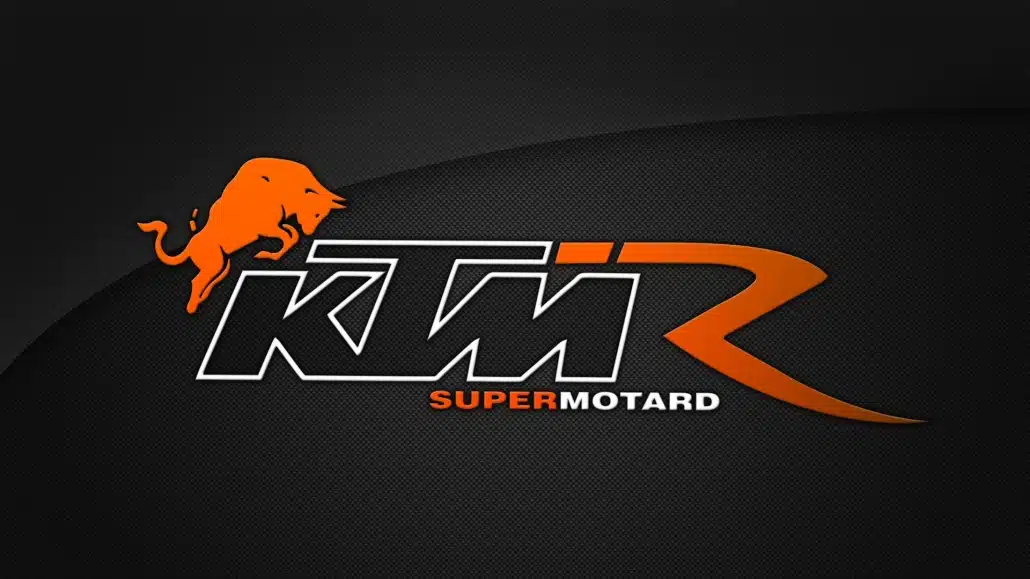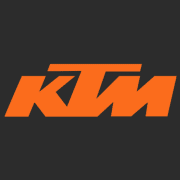Motivation: KTM Logo History, Significance, Facts, and PNG
KTM is a well-known multinational motorcycle company that began in Austria in 1934 and has since split into four groups, one of which is the motorcycle sector. The organization’s main office is in Mating fen, Austria, and Hans Trankenpolz’s KTM Motor-Fahrzeugbau KG founded it in 1992.
Motorcycle Background
The well-known engineer Hans Trunkenpolz founded the group in Mattighofen in 1934. Initially, the group ran a small metalworking shop called KraftfahrzeugeTrunkenpolzMattighofen.
It wasn’t until 1953 that KTM started making its first motorbike. Twenty people worked for the shop but could only make three motorcycles daily.
Ernst Kronreif, a businessman, bought a big piece of the organization in 1955 and became a partner. The company was called Kronreif&TrunkenpolzMattighofen because of this. In the beginning, almost all parts that went into KTM bikes were made in-house.
This made a big difference in speeding up production. By the end of the 1950s, there were six KTM bicycles in production, and they were well known in Germany as being of very high quality at a reasonable price. Starting in 1959, the company started making bikes.

Meaning and History
In KTM’s past, the decade from the 1960s to the 1970s was critical. In 1964, a professional racing team was set up. Because it had the famous KTM Comet, it won three sets of gold medals at the 1966 Six Days international races. After two years of enormous growth, the company now controls the American market with the Penton Six Days model.
In 1970, engineers at KTM made the engine for a powerful sports motorbike. That motorcycle went on to win three World Motocross Championships. When 1974 came around, KTM had 42 models in its range.
In 1986, KTM was the first motorbike company to put disc brakes on a road bike’s front and back. In 1998, they made a hinge less rear suspension for motorbikes, which made the vehicles much lighter when they weren’t being used.
In 2000, the company made a prototype of the first motorbike with a liter engine. After that, models like the 990 RC8 Venom and 990 Super Dukes were made available to the public in 2004. Because of its huge success, the latter eventually put the company back at the top of the global rankings.
In 2005, KTM Sportmotocycles AG partnered with Polaris Industries to sell 80,000 bikes worldwide. In 2006, however, the company said that the partnership would end early and would only continue selling ATVs with its 525 CC RFS engines.
Only a small percentage of motorcycle fans must learn about KTM’s goods. The 1290 Super Adventure, which has a 1300 cc engine and is the company’s top model right now, is exciting.
1953 – 1954
The first KTM image, which wasn’t approved, showed a tiger going around a track with the letters “KTM” on top. The orange and black colour scheme demonstrated the brand’s energy and excitement.
1954 – 1958
The official KTM logo, a swoosh sign over a blue wordmark on a bright orange oval, was first used in 1954. The logo is nice to look at because of its colour scheme and fun because of the funny writing lines.
1958 – 1962
1958, the company developed a new logo idea: a simple, one-colour illustration with exact, slightly italicized text. The oval’s border is made of black. The logo was the basis for all redesigns of the brand’s visual character that came after it.
1962 – 1978
The official KTM emblem got a new colour scheme during this time. It now has a light blue background with white letters. It looks modern and sleek and goes perfectly with the new typeface, where the notes are thicker and more connected. The oval form stays the same.
1978 – 1989
The KTM logo from 1978 is rougher and more manly than the one that came before it. The light blue turned into a deep blue, the letters got more robust and balanced, and the white outline around the oval made the symbol look modern.
1989 – 1992
The brand’s visual character underwent a considerable change during this period. Instead of the usual oval frame, an abstract symbol was placed to the left of the nameplate, and a bright blue wordmark with the red tagline “Fun in Motion” was set up.
In the same way as the letters, the emblem was made up of blue and red. The top was blue, and the bottom was red, showing half of the circle split into many thin lines.
1992 – 1996
The company’s well-known and skilled status is recognized by changing the tagline to “Motorcycles” and keeping the old image. KTM kept the mark for a total of four years.
1996 – 1999
The name goes back to its original colour scheme, which was orange. A white background sets off a simple, robust and straightforward wordmark. It makes people happy and gives them pleasure by mirroring the brand’s energy and movement in a perfect, clear way.
1999 – 2003
The colours of the image have been changed to orange and black, and the wordmark has been made black. The letter “T” has been made with an extended horizontal bar.
The orange word “Sportmotorcycles” in the logo is made up of capital letters that have been italicized.
2003 – Presently
The KTM logo now only has one wordmark that is emphasized with sharp edges and stiff shapes. The black logo is usually used in black and white, but it is sometimes put on an orange background to make it look more robust and intense.
Font and color
The KTM logo is made in an extra-bold sans-serif style with italicized letters spread far apart. It is worth mentioning that the Centre letter “T” is taller than two other letters.
The modern and sharp look of the colour scheme, which is made up of orange and black, fits with the organization’s main goal and target audience. By combining orange and black, which stand for power and progress, as well as stability and confidence, they make the simple symbol well-known.




Leave a Reply
Want to join the discussion?Feel free to contribute!